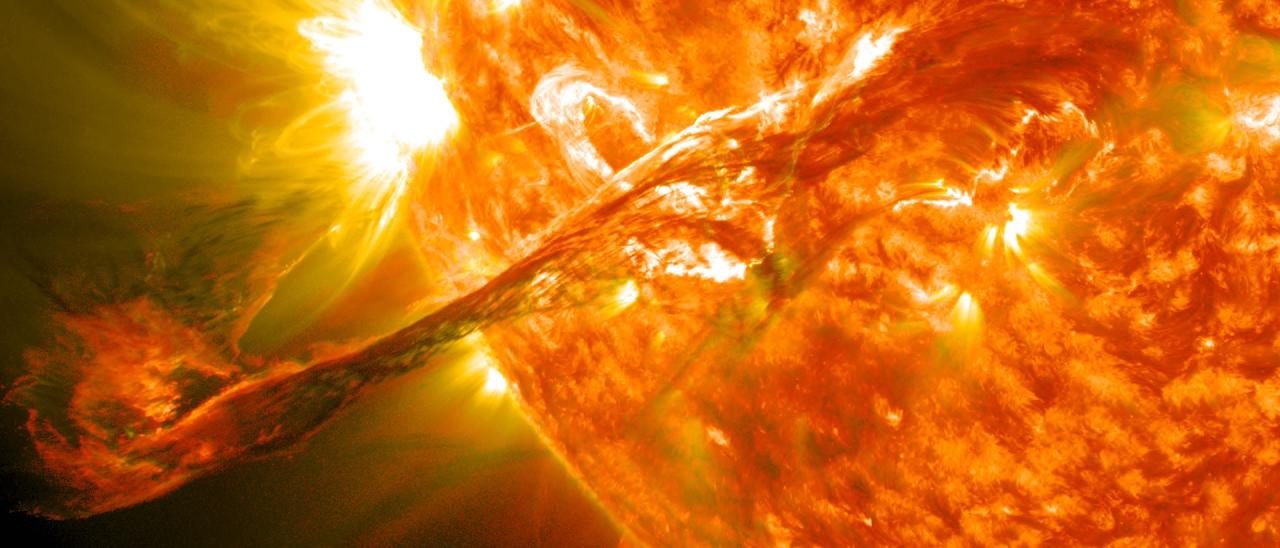A high-intensity solar flare causes a severe geomagnetic storm and a rare particle event
On 11 November, at 10:04 Canary Islands time, the Sun emitted a powerful X5-class solar flare, one of the most intense recorded in this solar cycle. The phenomenon originated in active region 4274 and was accompanied by at least two coronal mass ejections (CMEs) that were launched directly towards Earth.
These ejections travelled at high speed and their impact occurred earlier than expected, triggering a severe geomagnetic storm, classified as level G4 on the scale that classifies the intensity of this type of phenomenon. According to forecasts, the geomagnetic storm could remain active for the next few days.
One of the most intense in 20 years
"The impact of these coronal mass ejections is generating visible auroras at relatively low latitudes and is also causing strong disturbances in the Earth's magnetic field," says Héctor Socas Navarro, researcher at the Instituto de Astrofísica de Canarias (IAC) and director of the European Solar Telescope Foundation (EST).
"The most extraordinary thing about this event is that it has generated a Ground Level Enhancement (GLE)," Socas Navarro points out. This type of phenomenon occurs when solar particles are so energetic that, when they interact with the Earth's atmosphere, they cause a cascade of secondary particles that reach the surface and can be detected by neutron stations around the world.
"GLEs are extremely rare, with only a few occurring in each 11-year solar cycle, and for them to occur, highly energetic protons accelerated to hundreds of megaelectronvolts from the Sun must collide with Earth," explains the researcher.
The combination of the X5-class flare and coronal mass ejections has resulted in a GLE comparable to that which occurred on 13 December 2006, one of the most intense in recent decades. Although the data is still being analysed, according to Socas Navarro, everything indicates "that this event is among the largest in terms of GLE and one of the most significant in the last 20 years".
No serious effects on daily life
"What does this mean? We do not expect a major direct impact on daily life, but as always, it is advisable to be vigilant as it may have effects on navigation systems, high-frequency communications, satellites, radiation on circumpolar flights, etc. All these kinds of usual effects may occur and caution must be exercised," warns the solar physicist.
From a scientific point of view, this episode offers a valuable opportunity to study the mechanisms of particle acceleration in the Sun and their interaction with the Earth's environment. And for sky-watching enthusiasts, these days could provide a unique opportunity to see auroras without having to travel to polar latitudes. "You don't need to go to Norway these days to see auroras. Apart from that, it shouldn't have a major impact on everyday life, but scientifically it's very interesting," he concludes.

